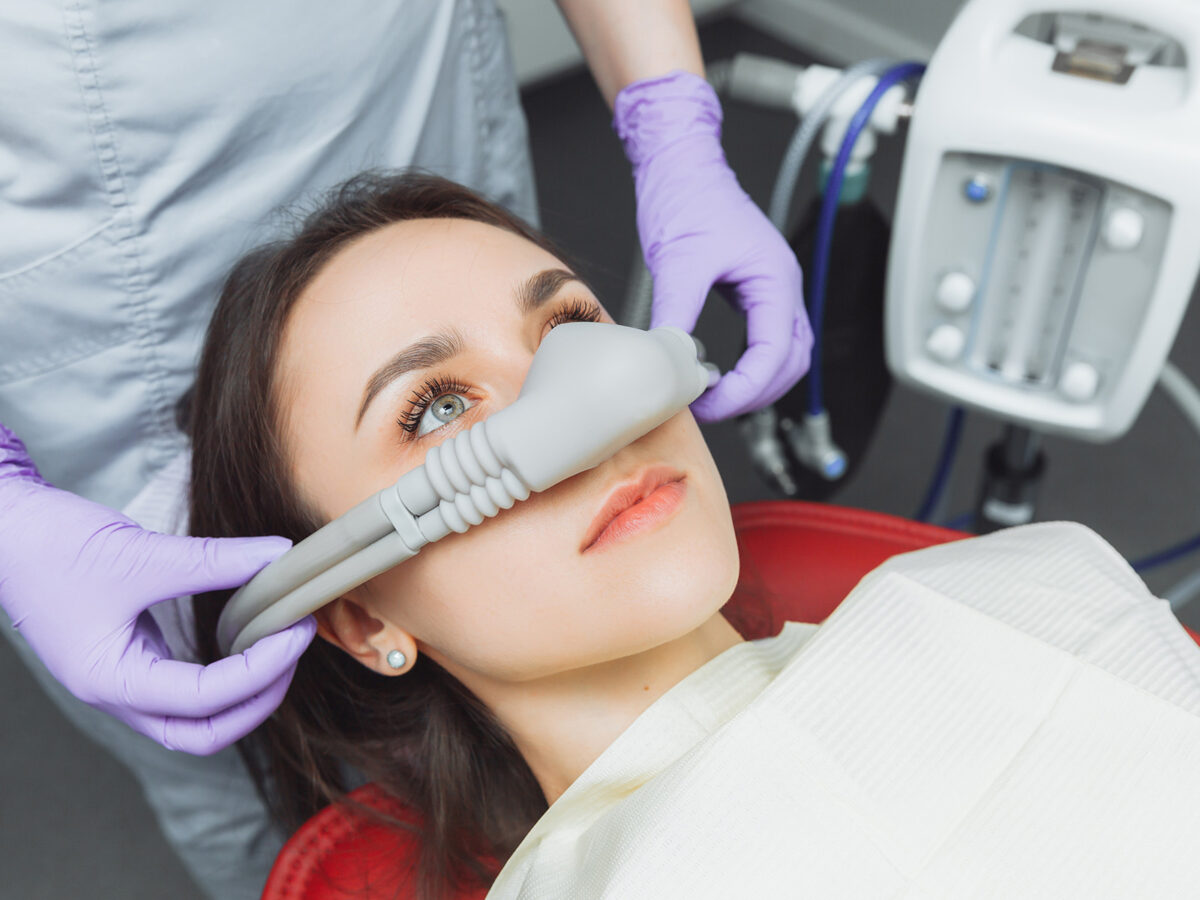Blog
Dental hygiene tips for healthy teeth & gums

5 Things To Keep In Mind When Considering Sedation Dentistry
Most of us avoid going to a dentist for fear of pain associated with dental work. Some people are averse to the idea of someone else intruding inside their mouths and being in control of it. For people with such anxiety, sedation dentistry is a wonderful option to opt for while undergoing some formidable oral procedure.
Sedation dentistry is a method used in dental procedures where the patient is made more comfortable by administering some form of sedation. Another name for sedation dentistry is twilight sleep, as this creates a state of forgetfulness or short-term amnesia where the patient does not lose consciousness yet becomes insensitive to pain.
We will learn more about how this twilight sleep works and what are some vital things to keep in mind before considering sedation dentistry.
What is Sedation Dentistry?
With sedation dentistry, even the most anxious of patients will feel relaxed and comfortable while undergoing any dental treatment.
- The level of sedation is moderate, where you are technically awake but feel carefree.
- People opt for this short-term amnesia method while undergoing a lengthy or painful oral procedure.
- Twilight sleep can be achieved via many options, such as inhalation of nitrous oxide, IV or intravenous sedation, and oral conscious sedation.
- Dentists who can administer twilight sleep to patients need to have special certification to carry out this procedure.
Who Might Want To Undergo Twilight Sleep Before Oral Procedures?
People of all ages can take advantage of sedation dentistry (including children). Your dentist would recommend this option if you have any of the following considerations:
- Fear of visiting dentists.
- Fear of needles (also called aichmophobia).
- Dental anxiety.
- Low sensitivity to local anesthesia.
- Extreme sensitivity in teeth.
- You have a severe gag reflex.
- You have difficulty controlling movements.
- You feel claustrophobic in the dental chair.
- You have special needs, which could be physical, cognitive, or behavioral.
- If you need a lot of dental work, all of it can be done in one sitting if you go for twilight sleep.
- You have sensitive gums.
- You experience pain in the neck, jaw, or back.
Types of Dental Sedation
There are mainly three types of twilight sleep with different levels of relaxation that they provide:
- Nitrous oxide or laughing gas – This is the most common one and also the least invasive without any complications. It gives you a sense of euphoria, and you might feel silly and giggly with it.
- Oral sedation – This is also called conscious sedation and comes in pill form. Generally, your dentist would give you two doses of the pill; one to take the night before the procedure and another to take an hour or so before the appointment. Oral sedatives make you relaxed and drowsy.
- IV dental sedation – This is the most invasive and deep form and is given to only those who have severe dental anxiety. The drug is injected through an intravenous needle in the patient’s arm and monitored for the complete duration of the procedure.
Five Things To Keep In Mind When Going For Sedation Dentistry
Twilight sleep is a safe, tried, and tested practice in the dental world. It may sound appealing to you, but not all of us are a candidate for all types of twilight sleep. Here are a couple of things you must know about this practice when you are considering twilight sleep for your next dental treatment:
- Anesthetics and sedatives are not the same – Anesthetics and sedatives are two completely different types of drugs. Anesthetics numb your senses, making you oblivious to pain during any procedure. On the other hand, sedatives merely relax patients. If you go for general anesthesia, you will be unconscious during the procedure, but with sedatives, you are awake but just in a relaxed state of mind.
- Inducing twilight sleep is safe when done right – There are no significant risks with sedation dentistry, and many sedatives used in this practice have been around for quite some time, with lots of research verifying their safety and effectiveness. Based on the severity of your anxiety, your dentist would decide on what type of sedative to go for. S/he might prescribe you some drugs to take before the appointment, or s/he may consider IV sedation as a more apt choice for you.
- Specific doses – Do not try to self-medicate to deal with your dental anxiety because you need very specific doses of these sedatives, which only an experienced dental professional can determine.
- Schedule a consult with your dentist – You must talk to your dentist and give your complete medical history before deciding on twilight sleep.
- Must have someone come along – Some of the sedatives can induce sleep, give a disoriented feeling, or slur your speech hence ensure you have someone to drive you back home after the procedure.
Summing up
Sedation dentistry is a viable option for those with dental anxiety, but you must talk to your doctor about the various options to decide if you are the right candidate for it.
